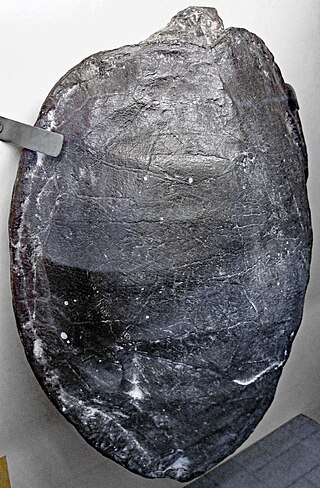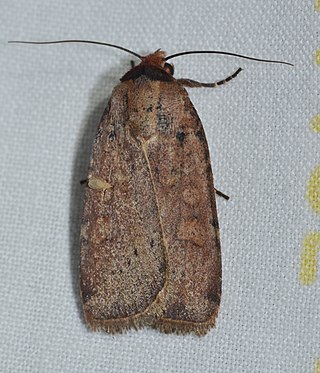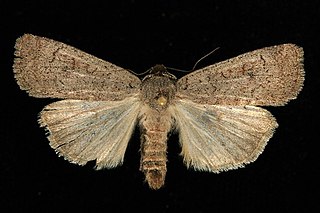| Protolampra | |
|---|---|
| Scientific classification | |
| Domain: | Eukaryota |
| Kingdom: | Animalia |
| Phylum: | Arthropoda |
| Class: | Insecta |
| Order: | Lepidoptera |
| Superfamily: | Noctuoidea |
| Family: | Noctuidae |
| Subtribe: | Noctuina |
| Genus: | Protolampra McDunnough, 1929 |
| Protolampra | |
|---|---|
| Scientific classification | |
| Domain: | Eukaryota |
| Kingdom: | Animalia |
| Phylum: | Arthropoda |
| Class: | Insecta |
| Order: | Lepidoptera |
| Superfamily: | Noctuoidea |
| Family: | Noctuidae |
| Subtribe: | Noctuina |
| Genus: | Protolampra McDunnough, 1929 |

Allosaurus is an extinct genus of large carnosaurian theropod dinosaur that lived 155 to 145 million years ago during the Late Jurassic period. The name "Allosaurus" means "different lizard", alluding to its unique concave vertebrae. It is derived from the Greek words ἄλλος and σαῦρος. The first fossil remains that could definitively be ascribed to this genus were described in 1877 by famed paleontologist Othniel Charles Marsh. As one of the first well-known theropod dinosaurs, it has long attracted attention outside of paleontological circles.

Camarasaurus was a genus of quadrupedal, herbivorous dinosaurs and is the most common North American sauropod fossil. Its fossil remains have been found in the Morrison Formation, dating to the Late Jurassic epoch, between 155 and 145 million years ago.

Barosaurus was a giant, long-tailed, long-necked, plant-eating sauropod dinosaur closely related to the more familiar Diplodocus. Remains have been found in the Morrison Formation from the Upper Jurassic Period of Utah and South Dakota. It is present in stratigraphic zones 2–5.

Camptosaurus is a genus of plant-eating, beaked ornithischian dinosaurs of the Late Jurassic period of western North America and possibly also Europe. The name means 'flexible lizard'.
Coelurus is a genus of coelurosaurian dinosaur from the Late Jurassic period. The name means "hollow tail", referring to its hollow tail vertebrae. Although its name is linked to one of the main divisions of theropods (Coelurosauria), it has historically been poorly understood, and sometimes confused with its better-known contemporary Ornitholestes. Like many dinosaurs studied in the early years of paleontology, it has had a confusing taxonomic history, with several species being named and later transferred to other genera or abandoned. Only one species is currently recognized as valid: the type species, C. fragilis, described by Othniel Charles Marsh in 1879. It is known from one partial skeleton found in the Morrison Formation of Wyoming, United States. It was a small bipedal carnivore with elongate legs.

Saurophaganax is a genus of large allosaurid dinosaur from the Morrison Formation of Late Jurassic Oklahoma, United States. Some paleontologists consider it to be a junior synonym and species of Allosaurus. Saurophaganax represents a very large Morrison allosaurid characterized by horizontal laminae at the bases of the dorsal neural spines above the transverse processes, and "meat-chopper" chevrons. It was the largest terrestrial carnivore of North America during the Late Jurassic, reaching 10.5 metres (34 ft) in length and 2.7–3.8 metric tons in body mass.
Mesadactylus is an extinct genus of pterosaur from the Kimmeridgian-Tithonian-age Upper Jurassic Morrison Formation of Colorado, United States. The genus was named in 1989 by James Jensen and Kevin Padian. The type species is Mesadactylus ornithosphyos.
Kepodactylus is an extinct genus of ctenochasmatid pterodactyloid pterosaur from the Kimmeridgian-Tithonian-age Upper Jurassic Morrison Formation of Colorado, United States.
Amphidon is an extinct genus of Late Jurassic mammal from the Morrison Formation. It is present in stratigraphic zone 5. The only species in the genus is Amphidon aequicrurius, found by Simpson in 1925.

Priacodon is an extinct genus of Late Jurassic eutriconodont mammal from the Alcobaça Formation of Portugal and the Morrison Formation of the midwestern United States. It is present in stratigraphic zones 4–6 of the latter. The genus contains four known species: Priacodon ferox, Priacodon fruitaensis, Priacodon lulli and Priacodon robustus.

Paurodon is an extinct genus of Late Jurassic mammal from the Morrison Formation of the Western United States.
Comotherium is an extinct genus of Late Jurassic mammal from the Morrison Formation. Present in stratigraphic zone 5.
Euthlastus is an extinct genus of Late Jurassic mammal from the Morrison Formation. Present in stratigraphic zones 5 and 6. It is represented by only five upper molars.
Schillerosaurus was a genus of prehistoric lizard of the Late Jurassic Morrison Formation of Western North America, and is currently the only squamate genus known to be endemic to the Morrison Formation. Described based on a partial skeleton from Dinosaur National Monument by Susan Evans and Dan Chure in 1999 as Schilleria utahensis, its name was subsequently changed to Schillerosaurus due to the former name already being occupied by a modern-day arachnid subgenus.

Uluops is an extinct genus of paracryptodire turtle from the Late Jurassic (Tithonian) of North America. The type and only species is Uluops uluops, which is known from a single skull from the Morrison Formation.

Dinochelys is an extinct genus of paracryptodiran turtle from the Late Jurassic Morrison Formation.

Protolampra brunneicollis, the brown-collared dart, is a moth of the family Noctuidae. The species was first described by Augustus Radcliffe Grote in 1864. It is found in eastern North America from New Brunswick to Alberta in southern Canada, and in the United States from Maine to North Carolina and Tennessee west to Mississippi, north to Minnesota, with scattered records in the west from North Dakota, South Dakota and Montana.

Protolampra sobrina, the cousin german, is a moth of the family Noctuidae. The species was first described by Philogène Auguste Joseph Duponchel in 1843. It is found in most of Europe, then east across the Palearctic to Siberia, Altai, Irkutsk, Kamchatka and Korea.

Uteodon is a genus of herbivorous iguanodontian dinosaur. It is a basal iguanodontian which lived during the late Jurassic period in what is now Uintah County, Utah. It is known from the middle of the Brushy Basin Member, Morrison Formation. The genus was named by Andrew T. McDonald in 2011 and the type species is U. aphanoecetes.

Protolampra rufipectus, the red-breasted dart moth, is a species of cutworm or dart moth in the family Noctuidae. It is found in North America.